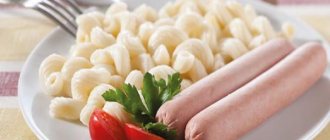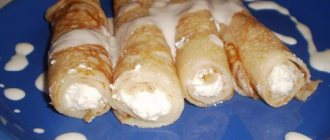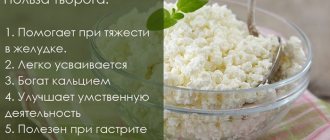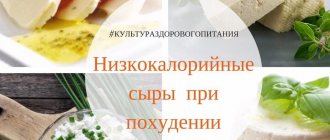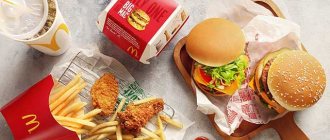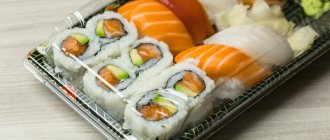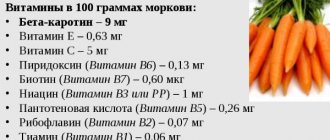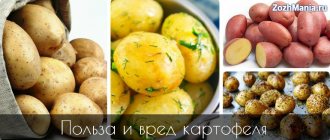The benefits and harms of cheesecake
Beneficial properties and possible harm depend on the composition. The main component of the dessert is cream cheese.
The most commonly used types of cheeses for cheesecake recipes include:
- ricotta;
- mascarpone;
- Philadelphia.
The benefits of these ingredients are as follows:
- these products contain the necessary building material for the body: calcium strengthens the skeletal system, improves the condition of hair, nails, teeth; in this regard, cream cheeses are recommended to be included in the menu of a child over 3 years old, in the diet of the elderly, and expectant mothers; according to the recommendations of nutritionists, these products are recommended for arthrosis, arthritis, tuberculosis;
- the high content of fatty acids helps strengthen the immune system, improve brain activity and skin condition;
- the high content of calcium, sodium, phosphorus helps restore strength after physical and mental stress;
- normalize the activity of the cardiovascular and nervous systems.
Often, the recipe uses butter, which is high in cholesterol and vitamins A and E. Cholesterol is necessary to participate in the process of building the walls of blood vessels and the production of vital hormones. Vitamins A and E have a beneficial effect on the condition of the skin and hair, and slow down the aging process.
For a more delicate and airy texture, cream of 33-35% fat content is added to the dough.
This product helps:
- get rid of depression;
- remove toxic substances in case of poisoning;
- prevent the formation of atherosclerotic plaques, which can lead to stroke.
Classic cheesecake, which is quite high in calories, can cause harm to the body if consumed in excessive quantities:
- excess cholesterol as a result of overusing butter can lead to cardiovascular diseases and inflammation of the pancreas; the recommended consumption of butter according to calculations by the World Health Organization is no more than 30 g/day;
- cream cheeses are quite high in calories and are high in fat (mascarpone contains up to 80% fat); These products are not recommended to be consumed if you are overweight, have hypertension, or have high stomach acidity; the exception is the unsalted variety of ricotta: limited consumption (under the supervision of a physician) of curd cheese is allowed in the presence of the above diseases;
- cream cheese, low-quality cream may contain antibiotics and hormones, which can lead to hormonal imbalances and disruption of the gastrointestinal tract;
- cookies high in sugar, preservatives and flavor enhancers have a negative impact on overall health and can provoke glucose spikes.
It is not recommended to include cheesecake in the menu of children under 3 years of age. A weak digestive system may not be able to cope with a fatty, high-calorie dessert.
Chemical composition of dessert
The products that make up the classic cheesecake are high in protein, vitamins and minerals, namely:
- albumin protein: easily digestible and helps strengthen the immune system;
- amino acids, in particular tryptophan: help, among other things, more quickly and effectively cope with stress, fatigue, insomnia, and also normalize the functioning of the nervous system as a whole;
- antioxidants: at the cellular level, they increase the body’s resistance to the negative effects of external factors and participate in hematopoiesis.
Of the vitamins present in the greatest quantities:
- A - has a positive effect on vision (100 g of butter contains 653 mcg, 35% cream - 270 mcg, mascarpone - 430 mcg);
- a complete list of B vitamins (normalize the activity of the nervous system and metabolism); the content of the following vitamins of this group is especially high: B12 (in Philadelphia cream cheese - 1 mcg, cream - 0.45 mcg), B2 (ricotta - 0.2 mg, Philadelphia 0.3 mg), B5;
- Butter contains a high content of vitamins D (up to 1.5 mcg) and E (1 mg);
- up to 4 mcg of vitamin H is contained in cream.
Of the minerals present in the greatest quantities:
- calcium (Philadelphia - up to 351 mg, ricotta - 272 mg, mascarpone - 68 mg);
- iron (ricotta – 0.4 mg);
- iodine (in cream up to 9 mcg);
- phosphorus (Philadelphia – 523 mg, ricotta – 183 mg, mascarpone – 97 mg);
- magnesium (Philadelphia – 22 mg);
- zinc (Philadelphia – 25.5 mg, ricotta – 1.3 mg);
- selenium (Philadelphia – 4.9 mcg, ricotta – 16.7 mcg).
Contents of the BZHU
The content of cheesecake BJU may vary depending on the components.
The table provides information about BZHU using the example of recipes with a different set of ingredients.
| Recipe | Proteins, g | Fats, g | Carbohydrates, g |
| Classic recipe (with Philadelphia) | 4.6 | 22.0 | 24.1 |
| In a slow cooker (with mascarpone) | 3.5 | 25.3 | 26.3 |
| Low calorie ricotta cheesecake | 10.4 | 5.8 | 18.3 |
| Pumpkin Cheesecake (Philadelphia) | 12.0 | 6.4 | 57.8 |
| No-bake coconut cheesecake (with mascarpone) | 5.4 | 32.2 | 20.1 |
Percent Daily Value
The table provides information on the percentage of BZHU from the daily value per 100 g serving of the presented recipes (subject to consumption of 1850 kcal per day).
| Recipe | Squirrels | Fats | Carbohydrates |
| Classic recipe (with Philadelphia) | 3.3% | 53.7% | 10.5% |
| In a slow cooker (with mascarpone) | 2.5% | 61.7% | 11.5% |
| Low calorie ricotta cheesecake | 7.5% | 14.2% | 8.0% |
| Pumpkin Cheesecake (Philadelphia) | 8.7% | 15.7% | 25.1% |
| No-bake coconut cheesecake (with mascarpone) | 3.9% | 78.4% | 8.8% |
Classic cheesecake recipe. Calorie, chemical composition and nutritional value.
Nutritional value and chemical composition of “Classic Cheesecake”.
The table shows the nutritional content (calories, proteins, fats, carbohydrates, vitamins and minerals) per 100 grams of edible portion.
| Nutrient | Quantity | Norm** | % of the norm in 100 g | % of the norm in 100 kcal | 100% normal |
| Calorie content | 232.9 kcal | 1684 kcal | 13.8% | 5.9% | 723 g |
| Squirrels | 4.3 g | 76 g | 5.7% | 2.4% | 1767 |
| Fats | 11.8 g | 56 g | 21.1% | 9.1% | 475 g |
| Carbohydrates | 27.3 g | 219 g | 12.5% | 5.4% | 802 g |
| Organic acids | 0.2 g | ~ | |||
| Water | 55.9 g | 2273 g | 2.5% | 1.1% | 4066 g |
| Ash | 0.527 g | ~ | |||
| Vitamins | |||||
| Vitamin A, RE | 59.7 mcg | 900 mcg | 6.6% | 2.8% | 1508 g |
| Retinol | 0.058 mg | ~ | |||
| beta carotene | 0.026 mg | 5 mg | 0.5% | 0.2% | 19231 g |
| Vitamin B1, thiamine | 0.024 mg | 1.5 mg | 1.6% | 0.7% | 6250 g |
| Vitamin B2, riboflavin | 0.119 mg | 1.8 mg | 6.6% | 2.8% | 1513 g |
| Vitamin B4, choline | 39.48 mg | 500 mg | 7.9% | 3.4% | 1266 g |
| Vitamin B5, pantothenic | 0.291 mg | 5 mg | 5.8% | 2.5% | 1718 g |
| Vitamin B6, pyridoxine | 0.035 mg | 2 mg | 1.8% | 0.8% | 5714 g |
| Vitamin B9, folates | 2.96 mcg | 400 mcg | 0.7% | 0.3% | 13514 g |
| Vitamin B12, cobalamin | 0.224 mcg | 3 mcg | 7.5% | 3.2% | 1339 g |
| Vitamin C, ascorbic acid | 0.54 mg | 90 mg | 0.6% | 0.3% | 16667 g |
| Vitamin D, calciferol | 0.333 mcg | 10 mcg | 3.3% | 1.4% | 3003 g |
| Vitamin E, alpha tocopherol, TE | 0.131 mg | 15 mg | 0.9% | 0.4% | 11450 g |
| Vitamin H, biotin | 3.045 mcg | 50 mcg | 6.1% | 2.6% | 1642 g |
| Vitamin K, phylloquinone | 0.5 mcg | 120 mcg | 0.4% | 0.2% | 24000 g |
| Vitamin RR, NE | 0.711 mg | 20 mg | 3.6% | 1.5% | 2813 g |
| Niacin | 0.068 mg | ~ | |||
| Macronutrients | |||||
| Potassium, K | 75.4 mg | 2500 mg | 3% | 1.3% | 3316 g |
| Calcium, Ca | 55.28 mg | 1000 mg | 5.5% | 2.4% | 1809 |
| Magnesium, Mg | 6.88 mg | 400 mg | 1.7% | 0.7% | 5814 g |
| Sodium, Na | 75.92 mg | 1300 mg | 5.8% | 2.5% | 1712 g |
| Sera, S | 31.3 mg | 1000 mg | 3.1% | 1.3% | 3195 g |
| Phosphorus, P | 58.9 mg | 800 mg | 7.4% | 3.2% | 1358 g |
| Chlorine, Cl | 122.31 mg | 2300 mg | 5.3% | 2.3% | 1880 |
| Microelements | |||||
| Aluminium, Al | 13 mcg | ~ | |||
| Iron, Fe | 0.37 mg | 18 mg | 2.1% | 0.9% | 4865 g |
| Yod, I | 5.48 mcg | 150 mcg | 3.7% | 1.6% | 2737 g |
| Cobalt, Co | 1.49 mcg | 10 mcg | 14.9% | 6.4% | 671 g |
| Manganese, Mn | 0.0067 mg | 2 mg | 0.3% | 0.1% | 29851 g |
| Copper, Cu | 14.53 mcg | 1000 mcg | 1.5% | 0.6% | 6882 g |
| Molybdenum, Mo | 2.739 mcg | 70 mcg | 3.9% | 1.7% | 2556 g |
| Tin, Sn | 3.37 mcg | ~ | |||
| Selenium, Se | 4.164 mcg | 55 mcg | 7.6% | 3.3% | 1321 g |
| Strontium, Sr | 4.4 mcg | ~ | |||
| Fluorine, F | 14.21 mcg | 4000 mcg | 0.4% | 0.2% | 28149 g |
| Chromium, Cr | 1.23 mcg | 50 mcg | 2.5% | 1.1% | 4065 g |
| Zinc, Zn | 0.2924 mg | 12 mg | 2.4% | 1% | 4104 g |
| Digestible carbohydrates | |||||
| Mono- and disaccharides (sugars) | 11.9 g | max 100 g | |||
| Essential amino acids | 0.024 g | ~ | |||
| Arginine* | 0.092 g | ~ | |||
| Valin | 0.09 g | ~ | |||
| Histidine* | 0.041 g | ~ | |||
| Isoleucine | 0.071 g | ~ | |||
| Leucine | 0.128 g | ~ | |||
| Lysine | 0.105 g | ~ | |||
| Methionine | 0.049 g | ~ | |||
| Methionine + Cysteine | 0.084 g | ~ | |||
| Threonine | 0.073 g | ~ | |||
| Tryptophan | 0.026 g | ~ | |||
| Phenylalanine | 0.077 g | ~ | |||
| Phenylalanine+Tyrosine | 0.134 g | ~ | |||
| Nonessential amino acids | 0.032 g | ~ | |||
| Alanin | 0.083 g | ~ | |||
| Aspartic acid | 0.144 g | ~ | |||
| Glycine | 0.049 g | ~ | |||
| Glutamic acid | 0.211 g | ~ | |||
| Proline | 0.049 g | ~ | |||
| Serin | 0.109 g | ~ | |||
| Tyrosine | 0.057 g | ~ | |||
| Cysteine | 0.034 g | ~ | |||
| Sterols (sterols) | |||||
| Cholesterol | 73.33 mg | max 300 mg | |||
| Saturated fatty acids | |||||
| Saturated fatty acids | 3.8 g | max 18.7 g | |||
| 4:0 Oil | 0.18 g | ~ | |||
| 6:0 Kapronovaya | 0.083 g | ~ | |||
| 8:0 Caprylic | 0.044 g | ~ | |||
| 10:0 Kaprinovaya | 0.101 g | ~ | |||
| 12:0 Lauric | 0.115 g | ~ | |||
| 14:0 Miristinovaya | 0.537 g | ~ | |||
| 15:0 Pentadecane | 0.001 g | ~ | |||
| 16:0 Palmitinaya | 1.714 g | ~ | |||
| 17:0 Margarine | 0.003 g | ~ | |||
| 18:0 Stearic | 0.558 g | ~ | |||
| 20:0 Arakhinovaya | 0.003 g | ~ | |||
| Monounsaturated fatty acids | 2.005 g | min 16.8 g | 11.9% | 5.1% | |
| 14:1 Myristoleic | 0.103 g | ~ | |||
| 16:1 Palmitoleic | 0.2 g | ~ | |||
| 17:1 Heptadecene | 0.001 g | ~ | |||
| 18:1 Oleic (omega-9) | 1.673 g | ~ | |||
| 20:1 Gadoleic (omega-9) | 0.005 g | ~ | |||
| Polyunsaturated fatty acids | 0.281 g | from 11.2 to 20.6 g | 2.5% | 1.1% | |
| 18:2 Linolevaya | 0.186 g | ~ | |||
| 18:3 Linolenic | 0.012 g | ~ | |||
| 20:4 Arachidonic | 0.011 g | ~ | |||
| Omega-6 fatty acids | 0.2 g | from 4.7 to 16.8 g | 4.3% | 1.8% |
The energy value of Classic Cheesecake is 232.9 kcal.
- Serving = 150 g (349.4 kcal)
Primary Source: Created in the application by the user. Read more.
** This table shows the average levels of vitamins and minerals for an adult. If you want to know the norms taking into account your gender, age and other factors, then use the “My Healthy Diet” application.
Calorie analysis
Classic cheesecake, whose calorie content is in the range of 160-400 kcal, has an average of 5 to 12 ingredients. It is the products that determine the final energy value. The table provides a list of the most commonly used components indicating their calorie content.
| Component | Calorie content per 100 g, kcal |
| Philadelphia | 225 |
| Mascarpone | 408 |
| Ricotta | 98-174 |
| Butter | 747 |
| Shortbread | 424 |
| Cream 35% | 336 |
| Sour cream 15% | 160 |
| Sugar | 374 |
| Cereals | 252 |
| Banana | 96 |
| coconut flakes | 693 |
| Honey | 329 |
| Pumpkin | 28 |
| Eggs | 155 |
How to make low calorie cheesecake
For this recipe, use the lowest calorie or low-fat foods possible. To prepare we will need:
- cookies (biscuits or shortbread) - 150 g;
- juice, preferably apple - 50 g;
- yogurt (1.5%) - 320 ml;
- low fat cottage cheese - 400 g;
- egg - 1 small;
- zest and juice of half a lemon;
- corn starch - 1.5 tbsp. l.;
- sugar - 3 tbsp. l.
Grind the cookies into crumbs, pour in the juice, knead thoroughly, and spread over the bottom of the springform pan. Beat cottage cheese with yogurt, sugar and zest. Add the egg, then the starch, continuing to beat. Place the fluffy mass in the mold and smooth out the top. Wrap the pan in foil - the cheesecake will cook in a water bath.
Place the mold in a larger dish and place in the oven, preheated to 180°C. Bake for 50 minutes, then turn off the heat and leave the cheesecake for another 2 hours. Considering what products we used and their calorie content, the cheesecake should turn out very light. That’s right, 100 grams of the product contains only 160 kcal.
Calorie content per 100 g
The table below provides information on the calorie content of ready-made desserts:
| Dish | Calorie content per 100 g serving, kcal |
| Classic recipe (with Philadelphia) | 312 |
| In a slow cooker (with mascarpone) | 347 |
| Low calorie ricotta cheesecake | 167 |
| Pumpkin Cheesecake (Philadelphia) | 337 |
| No-bake coconut cheesecake (with mascarpone) | 392 |
Add ripe berries
The combination of crispy dough, delicate cheese filling and fruits or apples turns out to be very harmonious and tasty. Even sugar is added to this dessert in minimal quantities, because the berries are tasty on their own. Be sure to make this cheesecake in the spring or summer. The calorie content per 100 grams will be 323 kcal if you use strawberries. Other berries and fruits may add a different calorie content to the dish.
How to reduce the calorie content of cheesecakes?
The calorie content of cheesecake can be reduced by using a minimum set of classic ingredients for the recipe, supplementing them with whole or pureed fruits and berries.
White refined sugar can be replaced with healthier honey or fructose.
As an alternative to sugar, you can use mashed banana or ripe peaches to add sweetness. The base of shortbread cookies and butter can be replaced with oatmeal mixed with dried fruits, nuts, and seeds.
Which has more calories than cheesecake or tiramisu? New York cheesecake
How to make New York Cheesecake
- Prepare the sand base.
- Grind the cookies in a blender into fine crumbs.
- Melt the butter. Pour the oil into the bowl with the shortbread crumbs. Mix the mass well.
- Place the crumbs in a springform pan and press down fairly tightly with a spoon or the bottom of a glass.
- Bake the shortbread base for about 10 minutes in an oven preheated to 180°C, then remove and cool.
- Wash the lemon, wipe dry and remove the zest from it using a grater or a special device for removing the zest.
- Prepare the cream.
- All ingredients for the cream must be removed from the refrigerator in advance. Cream cheese, eggs and cream - should be at room temperature.
- Grind the sugar together with vanilla sugar in a coffee grinder into powder.
- Place the cream cheese in a large bowl, add powdered sugar and mix the mixture with a spoon. Then lightly beat with a mixer at minimum speed - literally, so that the mass just mixes and becomes homogeneous.
- Add the eggs one at a time, stirring the mixture well with a whisk each time.
- The cream should not be stirred or beaten with a mixer too intensively - this can cause it to become oversaturated with air and cracks will form on the surface of the cheesecake.
- Add lemon zest and stir.
- Pour in the cream and whisk the mixture again. You should get a smooth, homogeneous cream. Pour the resulting cream into a mold with a sand base. Smooth the surface with a spatula.
- Preheat the oven to 160-170°C in advance and bake the cheesecake in a water bath.
- Place the cheesecake pan in a deep baking tray (or deep pan) and pour boiling water into it.
- The water in the pan should come up to about halfway up the cheesecake pan.
- Cheesecake, when baked in a water bath, bakes evenly, since steam creates more favorable conditions for baking than the heat from the oven.
- Bake the cheesecake for 60-80 minutes.
- When the finished cheesecake is shaken, the center should shake slightly. As it cools, the cheesecake will be ready and the center will become elastic.
- Leave the finished cheesecake in the turned off oven (with the door ajar) for about an hour.
- Cover the mold with the cooled cheesecake with cling film and put it in the refrigerator overnight.
Step-by-step cheesecake recipes for regular and diet menus
When preparing cheesecake at home, follow these guidelines:
- all products must be at room temperature;
- It is not recommended to whip cream cheese at high speeds; due to the enrichment of the dough with oxygen during the baking process, cracks may form;
- the dessert is baked at a temperature of no more than 160⁰ and in a water bath, which avoids cracks in the finished product;
- the water for the water bath should be hot;
- to protect against possible water getting into the filling, the mold is wrapped in foil, the distance between the walls of the bowl with water and the mold with the dough should be at least 5 cm;
- When baking, do not open the oven or the multicooker lid, otherwise the cheesecake will settle and be less airy;
- after turning off, after 15 minutes, remove the cheesecake from the water bath, and leave the dessert in the oven with the door ajar for 1-2 hours;
- Cover the cooled pie with cling film and place in the refrigerator for 5-7 hours;
- To carefully remove the finished product without disturbing its integrity, it is recommended to prepare the cheesecake in a springform pan.
The following can be used as decoration:
- fresh berries, fruits;
- chocolate, sweets;
- marshmallows;
- fruit, berry, chocolate syrups, topping;
- cookie;
- zest and candied citrus slices.
Classic recipe
One of the classic versions of cheesecake is New York cheesecake , the recipe for which originated in the city of the same name. The main ingredient of the dessert is traditionally Philadelphia cream cheese, invented in America in the 2nd half of the 19th century.
The full list of products includes:
- 220 g shortbread cookies (without fillers and flavorings);
- 120 g butter;
- 3 chicken eggs;
- 130 g sugar;
- 600 g Philadelphia cheese;
- 150 ml cream 35% fat;
- ½ tbsp. l. vanilla bean tinctures;
- 1 tsp. without a heap of chopped lemon zest;
- 1 tbsp. l. lemon juice.
A mold with a diameter of 20 cm will be most suitable for this quantity of products. The products for the cheesecake should be removed from the refrigerator in advance so that they warm up to room temperature.
Classic cheesecake, the calorie content of which when finished is 312 kcal/100 g, is prepared as follows:
- Grind the cookies into fine crumbs using a food processor or mortar and mix with melted butter.
- The resulting mass is compacted in an even layer on the bottom of the baking dish. If desired, you can make sides.
- Next, the cake is put into the freezer for 15 minutes.
- In order for the sugar to mix better with the cream cheese, it should be ground into powdered sugar, for example, in a coffee grinder.
- Powdered sugar is carefully mixed with a whisk with cream cheese and chicken eggs are gradually added, 1 at a time.
- Then add cream, then vanilla bean tincture, lemon zest and juice. The mass is mixed again until it has a homogeneous consistency.
- Remove the mold with the cake from the freezer, pour in the creamy base, and wrap it in 2-3 layers of foil to protect against possible ingress of water.
- The oven is preheated to 160⁰. The form with the dessert is placed in a wider container filled with hot water. The water level should reach the middle of the dessert pan.
- The cheesecake is baked for 1 hour. Then turn off the oven.
- After 15 minutes, open the door slightly, remove the bowl of water, and leave the product in the oven for another 1-2 hours.
- The cooled pie is placed in the refrigerator for 6-8 hours.
The calorie content of a classic cheesecake exceeds 300 kcal per 100 g.
Before serving, the cheesecake should be kept at room temperature for about 30 minutes and decorated if desired. The cream in the recipe can be replaced with sour cream, the vanilla bean tincture can be replaced with vanilla sugar or vanillin.
In a slow cooker
You can use a slow cooker to make cheesecake. The process is practically no different from the standard baking method.
You need to prepare:
- 500 g mascarpone;
- 200 g shortbread cookies;
- 100 g butter;
- 1 tbsp. l. butter for lubricating the multicooker bowl;
- 120 g powdered sugar;
- 2 large eggs;
- 1 banana;
- 4 tbsp. l. sour cream (15%).
To make the dessert easier to remove, you can put a sheet of parchment on the bottom of the multicooker. The sheet is cut into 2 parts and the strips are placed crosswise, or the bowl is lined with parchment, leaving the sides 3-4 cm above the level of the product.
Cooking procedure:
- The multicooker bowl should be greased with butter.
- Cookies, crushed into crumbs, are mixed with melted butter and the mixture is placed on the bottom of the multicooker. The base is carefully compacted and the sides are formed.
- Next, put the bowl with the base in the refrigerator for 15 minutes.
- Beat chicken eggs with sugar using a mixer, then add sour cream.
- The resulting mixture is combined with mascarpone and the filling is kneaded until smooth.
- The banana is cut crosswise (into 2 halves), each part is cut lengthwise into slices 2-3 mm thick.
- The bowl with the base must be removed from the refrigerator. First, put ½ of the filling on the base, then spread the bananas over the entire surface and fill them with the remaining mass.
- Place the bowl in the multicooker, close the lid and turn on the baking mode (40 minutes).
- After the sound signal indicates that the dessert is ready, the pie is left under the closed lid for at least another 30 minutes.
- Remove the cooled cheesecake from the bowl using spatulas and put it in the refrigerator for 6-8 hours.
Low calorie ricotta cheesecake
Whey is used to make ricotta. Ricotta tastes more like soft, tender cottage cheese. Compared to Philadelphia and mascarpone, this product is low in calories. On sale you can find light ricotta with calorie content from 98 to 124 kcal per 100 g.
Thanks to the replacement of some ingredients with high energy value, this dessert is low in calories.
For the base you need:
- 100 g oatmeal;
- 80 g dried fruits;
- ½ banana;
- seeds, nuts to taste.
For cream:
- 600 g light ricotta;
- 2 eggs;
- sweetener - to taste;
- 1 banana;
- 1 tsp. finely grated lemon zest.
The dish is prepared as follows.
- First you need to prepare the base. Using a blender, grind oatmeal and add nuts or seeds if desired. Dried fruits and banana are added to the resulting mass.
- The mixture is placed in a baking dish lined with parchment and placed in an oven preheated to 180⁰ for 15 minutes. Afterwards the base is cooled.
- Next you need to prepare the cream. The yolks are separated from the whites, the latter are whipped into a dense foam.
- Mash the banana with a fork or blender.
- Add banana puree, yolks, sweetener to the ricotta and mix the mass thoroughly. Then add lemon zest and whipped egg whites.
- Spread the curd mass onto the cooled base and place in an oven preheated to 160⁰ for 1 hour.
- 20 minutes after cooking, open the oven door slightly and leave the cheesecake for another 1 hour.
- When the dessert has cooled, put it in the refrigerator for 5-6 hours.
Dried fruits that are especially suitable for the base are:
- sweet dried apricots;
- figs;
- dates;
- seedless raisins.
Pumpkin cheesecake
Pumpkin is low in calories, high in fiber, vitamins (especially A, C and group B) and minerals.
The filling includes:
- 150 g pumpkin puree;
- 400 g cream cheese;
- 3 tbsp. l. rice flour;
- 3-4 chicken eggs;
- 1 tsp. orange zest;
- 2-3 tbsp. l. honey;
For the base:
- 100 g oatmeal;
- 100 ml milk;
- 2 egg whites;
- ½ tsp. cinnamon;
- 1-2 tbsp. l. Sahara.
This recipe calls for pumpkin puree. It can be made from a raw vegetable (using a food processor or a powerful blender), or steam the pumpkin until soft, then grind it in a blender until smooth. Pumpkin puree can be diluted with carrot puree.
Cooking steps:
- Using a blender, grind the oatmeal, add milk, cinnamon, sugar and mix everything thoroughly.
- Beat the chilled whites into a thick foam and carefully add them to the base mixture, stirring the components with a spoon in one direction.
- The workpiece is transferred to a baking dish lined with parchment and sent to preheated to 150⁰ for 10-15 minutes. Then the base needs to be cooled.
- To prepare the filling, simply mix all the ingredients into a homogeneous mass in a separate container.
- The filling is placed on the cheesecake base. The mold is wrapped in foil, placed in a water bath and baked at 150⁰ 60 minutes.
- The finished cake is removed from the water bath and left in the oven with the door ajar for 1 hour. Afterwards, the cheesecake is covered with cling film and placed in the refrigerator for 6 hours.
If desired, you can add sugar to the cream.
No Bake Coconut Cheesecake
To make a no-bake cheesecake you will need gelatin.
For coconut cheesecake you need to prepare:
- 500 g mascarpone;
- 200 g cream 35% fat;
- 150 g coconut flakes;
- 20 g gelatin;
- warm boiled water for diluting gelatin;
- 100 g white chocolate;
- 80 g powdered sugar.
For the base:
- 50 g coconut flakes;
- 20 g roasted almonds;
- 250 g shortbread cookies;
- 120 g butter.
Classic cheesecake, the calorie content of which is significantly higher than previously presented options due to the use of mascarpone and white chocolate, is prepared as follows.
Cooking steps
- Gelatin should be prepared in advance according to the manufacturer's instructions. As a rule, the dry mass is poured with 100 ml of slightly warm boiled water for 40 minutes, then the mixture is heated with constant stirring until the granules are completely dissolved (without bringing to a boil). When heated, the optimal temperature for gelatin is 60-70⁰, otherwise it loses its properties.
- To prepare the base, you need to crush the shortbread cookies into fine crumbs, mix with butter and add coconut flakes with finely chopped almonds.
- The resulting mass is placed on the bottom of the mold, compacted tightly and baked at 150⁰ for 10-15 minutes.
- Next, add mascarpone and powdered sugar to the whipped cream with a mixer, and mix the ingredients thoroughly again.
- White chocolate is broken into pieces and melted in a water bath. The mass will be more liquid if you add 20 g of butter.
- Melted chocolate and coconut shavings are added to the cream preparation, ready-made gelatin is added and the components are thoroughly mixed.
- The resulting mixture is spread on the cooled cake, covered with cling film and put in the refrigerator for up to 5-6 hours until completely hardened.
Instead of white chocolate, you can add condensed milk to the cream.
Cheesecake can become part of the holiday table and diet menu. During the cooking process, you can experiment by adding fruit and chocolate to the main components of the classic version. Or, on the contrary, reduce the calorie content by excluding butter and cookies from the recipe, replacing it with healthier oatmeal and dried fruits.
Cheesecake benefits and harms. Attention to calorie content! Cheesecake and its varieties in the diet menu
Cheesecake is considered one of the healthiest desserts, because its recipe includes a cheese base, and is often supplemented with natural berries and fruits. However, you should not think that you can safely enjoy an impressive piece of this delicacy without harming your figure. Those who are on a diet and strictly monitor calories should understand that this delicacy is quite nutritious. What is its calorie content? Cheesecake can have different energy values and fat content, it all depends on the recipe. Let's look at the most popular and common ones.
Calorie content of classic cheesecake
When preparing this delicate dessert, a variety of cheeses are used. The following are very popular:
- mascarpone;
- Philadelphia;
- ricotta;
- "cheese mass";
- homemade cottage cheese.
It is the high cheese content in the dessert that determines its high calorie content. Cheesecake on average contains from 350 to 700 kilocalories per 100 grams of product. This directly depends on the fat content of the cottage cheese and other components of the dessert. If you are strictly watching your figure and trying to consume as few calories as possible, just select low-calorie varieties of cheese or cottage cheese for cooking. This also applies to cookies: give preference to low-fat types.
If you prepare a cheesecake according to the classic recipe from low-fat cheese, you will get a dessert with a calorie content of 300 kcal\100 g. The average nutritional value of the delicacy will be as follows: fat - 15 g, carbohydrates - 30 g, protein - 60 g.
Chocolate and calories
Cheesecake with cocoa will, of course, be somewhat “heavier”. Add calories and natural chocolate. Of course, the dessert will turn out simply luxurious, but don’t delude yourself that “one bite won’t change anything.” Even if low-fat cheese is used, 100 grams of chocolate cheesecake will contain at least 380 kcal. The minimum amount of fat will increase to 22 g. The high calorie content of a cheesecake made from cheese or cottage cheese can only be reduced by using completely low-fat ingredients.
New York cheesecake
This dessert requires baking in the oven. In addition to the fats that make up the product, the calorie content is also affected by the fat that is used to lubricate the mold.
And New York’s roster is quite heavy. It contains sour cream or cream, butter, cheese, eggs. New York cheesecake, whose calorie content is 267.5 kcal per 100 grams, has the following nutritional value: proteins - 5.6; fat - 18.9; carbohydrates - 20.7.
Add ripe berries
The combination of crispy dough, delicate cheese filling and fruits or apples turns out to be very harmonious and tasty. Even sugar is added to this dessert in minimal quantities, because the berries are tasty on their own. Be sure to make this cheesecake in the spring or summer. The calorie content per 100 grams will be 323 kcal if you use strawberries. Other berries and fruits may add a different calorie content to the dish.
How to make low calorie cheesecake
For this recipe, use the lowest calorie or low-fat foods possible. To prepare we will need:
- cookies (biscuits or shortbread) - 150 g;
- juice, preferably apple - 50 g;
- yogurt (1.5%) - 320 ml;
- low fat cottage cheese - 400 g;
- egg - 1 small;
- zest and juice of half a lemon;
- corn starch - 1.5 tbsp. l.;
- sugar - 3 tbsp. l.
Grind the cookies into crumbs, pour in the juice, knead thoroughly, and spread over the bottom of the springform pan. Beat cottage cheese with yogurt, sugar and zest. Add the egg, then the starch, continuing to beat. Place the fluffy mass in the mold and smooth out the top. Wrap the pan in foil - the cheesecake will cook in a water bath.
Place the mold in a larger dish and place in the oven, preheated to 180°C. Bake for 50 minutes, then turn off the heat and leave the cheesecake for another 2 hours. Considering what products we used and their calorie content, the cheesecake should turn out very light. That’s right, 100 grams of the product contains only 160 kcal.
